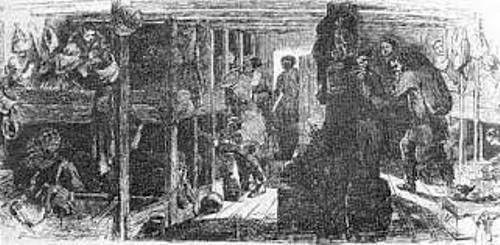 | ||
Primordial the coffin ships
The term coffin ship (Irish: cónra-long) is used to refer to the ships that carried Irish immigrants escaping the Great Irish Famine as well as Highlanders displaced by the Highland Clearances. These ships, crowded and disease-ridden, with poor access to food and water, resulted in the deaths of many people as they crossed the Atlantic, and led to the 1847 North American typhus epidemic at quarantine stations in Canada. Owners of coffin ships provided as little food, water, and living space as was legally possible – if they obeyed the law at all.
Contents
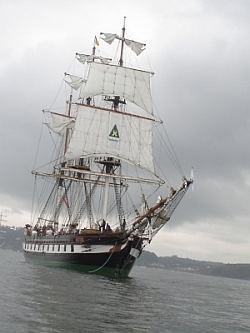
While coffin ships were the cheapest way to cross the Atlantic, mortality rates of 30% aboard the coffin ships were common. It was said that sharks could be seen following the ships, because so many bodies were thrown overboard.
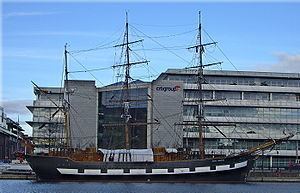
Irish coffin ship
Legislation
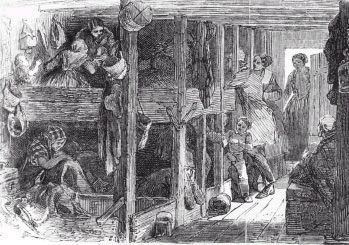
Legislation to protect emigrant passengers, the Passenger Vessels Act, was first enacted in Britain in 1803 and continued to evolve in the following decades. A revised Act in 1828, for example, marked the first time that the British government took an active interest in emigration matters. Within a few years, regulations were in force to determine the maximum number of passengers that a ship could carry, and to ensure that sufficient food and water be provided for the voyage.
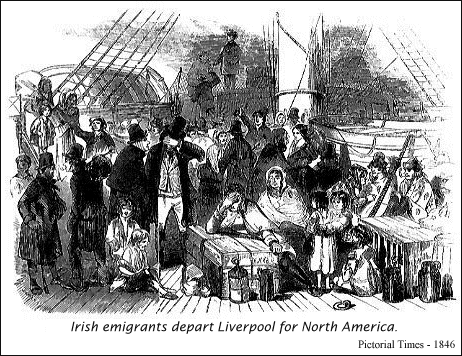
But the legislation was not always enforceable, and unscrupulous shipowners and shipmasters found ways to circumvent the law. In addition, ships sailing from non-British ports were not subject to the legislation. As a consequence, thousands of emigrants experienced a miserable and often dangerous journey. By 1867, regulations were more effective, thus providing people with the promise of a safe, if not comfortable, voyage.
Memorials
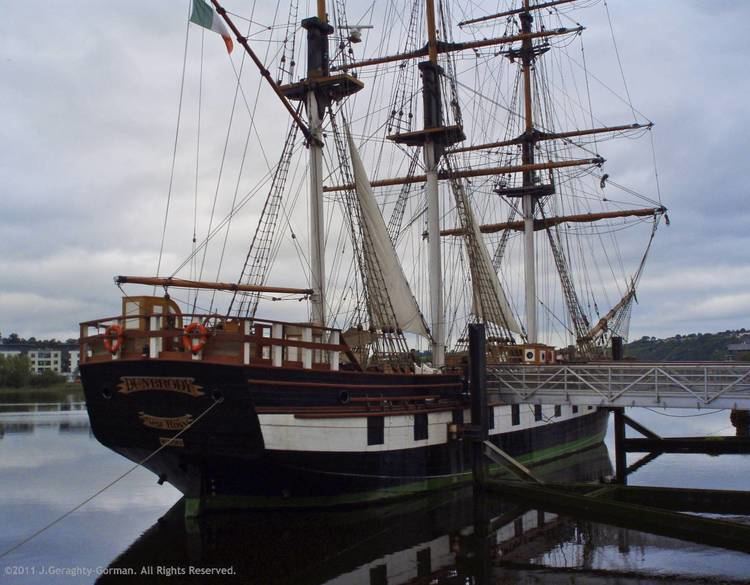
The National Famine Monument at the base of Croagh Patrick in Murrisk, County Mayo, Ireland depicts a coffin ship with skeletons and bones as rigging. Sculpted by John Behan, it is Ireland's largest bronze sculpture. The "Coffin Ship" was unveiled by then President of Ireland Mary Robinson in 1997 to mark the 150th anniversary of the Irish Famine.
In popular culture

In The Pogues song "Thousands Are Sailing", the ghost of an Irish immigrant laments, "…on a coffin ship I came here/ And I never even got so far that they could change my name."
Additionally, the Irish metal bands Cruachan and Primordial both have songs entitled "The Coffin Ships". Primordial's version was released on their 2005 album The Gathering Wilderness, whilst Cruachan's (unrelated) song was written for their 2007 album, The Morrigan's Call. The Australian/Irish band Clann Zú also makes mention of coffin ships in the song Black Coats and Bandages.
Irish poet Eavan Boland mentions the coffin ships in her poem "In a Bad Light" from the collection In a Time of Violence, and in her memoir Object Lessons: The Life of the Woman and the Poet in Our Time.
Flogging Molly, a popular American Irish band with punk tendencies, uses the term "coffin ship" in their song "You Won't Make a Fool Out of Me" from their album Float. The quote is as follows: "But green is the heart of your greed / That much I can tell / you may think you're the captain of me / But I'm your coffin ship from hell"
Frank Herbert's novel The White Plague which is about a worldwide plague-like virus that only killed women featured modern coffin ships which carried Irish people back home to their deaths, as demanded by the novel's antagonist who had released the virus.
